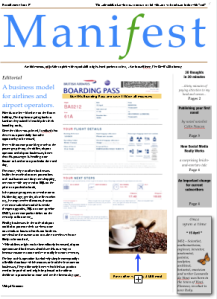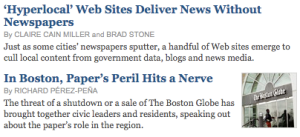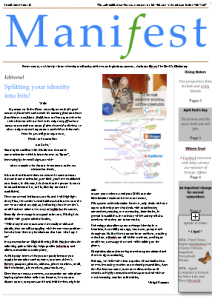Splitting your identity into bits!
Editorial: ManifestN16
“Hello, My names are Esther Diane, am really in search of a good partner or friend who understands the meaning of partnership or friendship as trustfulness, faithfulness and honesty in each other, rather than one who sees both as the only a way of fun but a mature person with nice vision of what the world is all about, so please reply to me with my private e-mail address below and i hope that you will grant my request. Thanks and remain bless, Am Esther.”
You may be familiar with this kind of electronic communication which is better known as “Spam”. Interestingly, the email signs-off with: please remember that distance do not matter in this our relationship, thanks. It is true that distance does not matter in some areas of electronic communication, provided, you have established trust before. In this case, it is clear that the person is not to be trusted because her, or his, identity cannot be established.
There are several indicators for this and I will highlight three. First, the sender’s email address is different from the one we are asked to reply-to, indicating that the sender’s email has been taken over to try to legitimise the source. Secondly the message is too good to be true. Thirdly, it is riddled with grammatical mistakes. While many internet users can now easily avoid such pitfalls, they are still struggling with the converse problem: how do I convince my interlocutor that I am who I say I am?
In a presentation on Digital Identity, Dick Hardt makes the following points: identity helps predict behaviour and allows transactions to take place. A third party knows who you are partly because you supply information such as name, surname, driver’s licence, passport, pictures, address, phone numbers, email, birth certificate., pin numbers, passwords etc… Once they are cross-references, a transaction can take place: buying a plane ticket online for instance.
In a not-too-distant future, computers and hand-held devices might be able to scan your retina or read your DNA to make identification easier and even more secure. This system of identification however, only deals with one aspect of identity; one that deals with coordinating transactions,crossing, or not crossing, boundaries. In general it establishes the rules by which society tells its members what they can or cannot do. Technology also allows you to change identity in a heartbeat. A serf 600 years ago, was a serf, pretty much throughout his life. Now you can be an architect, a fishing enthusiast, a Beatles fan all within a minute, sending an email here, a message there and while talking on the phone.
Complaints about shortening attention-spans abound and show no signs of abating. Perhaps, we will evolve into a species whose bodies host an ever-increasing number of unrelated personalities, After the 15 minutes of fame, come an endless series of 15 seconds of highly focused attention-span to deal with an ever-increasing number of identities.



 Posted by Wahyd Vannoni
Posted by Wahyd Vannoni 
 Following the great success and interest in our first
Following the great success and interest in our first 



